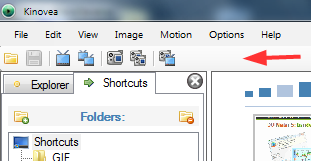Yes, it makes sense 
So,
CTRL + Key = next 1% spot.
Shift + Key = next 10% spot.
Key alone = next 25% spot.
Respectively Left / Right for the decrease/increase of the delayed during live capture.
----------------
Regarding capture and left/right reversal.
The idea was that when you press pause and the buffer is frozen, you would want to use the same interface for playing back and step-by-steping the recent frames.
I think the most intuitive way for playback is to have a left-to-right navigation, left being the start of the video, right being the end. (as in the playback screen).
So in that case it would be better if you can go forward in the video by pressing RIGHT.
Let say the user didn't apply any delay. Slider is all the way left. Left end is most recent, right end is oldest.
As soon as you pause frame grabbing, we will want to turn the slider over so that left is now start and right is now end. Maybe even force the cursor back to left.
At that point sliding right (with mouse or keys) should make you go forward in time. This will be the opposite of when live capturing where sliding right makes you go back in time.
(Maybe the reversal of the function will not be so obvious, I don't know.)

